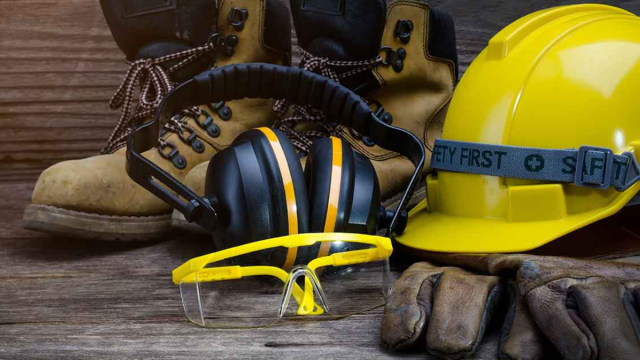Personal Protective Equipment (PPE) is a vital component of workplace safety in the construction industry. In Victoria, where strict occupational health and safety (OHS) regulations apply, PPE plays a crucial role in protecting workers from common construction site hazards including falling objects, loud machinery, airborne particles, and exposure to harmful substances. Whether you’re operating on a large-scale commercial project or a residential build, understanding the legal PPE requirements can make the difference between a safe site and serious injury.
Why PPE is Non-Negotiable
Contents
PPE is not just good practice—it’s a legal obligation. Under the Occupational Health and Safety Act 2004 (VIC), employers must provide a safe working environment, which includes supplying the necessary PPE. Workers are also required to use PPE properly and follow safety procedures. Failure to comply can result in penalties, site shutdowns, and in worst-case scenarios, devastating accidents.
What PPE is Legally Required on Victorian Construction Sites?
- Hard Hats: Head protection is mandatory on all construction sites to guard against falling debris, accidental head contact with stationary objects, and impact from tools or machinery. Hard hats should comply with AS/NZS 1801 standards and be replaced if damaged or after a significant impact.
- High-Visibility Clothing: Workers must wear high-visibility garments, especially when working around moving vehicles or machinery. These items help ensure visibility in both daylight and low-light conditions. Reflective vests or shirts should comply with AS/NZS 4602.1:2011.
- Protective Footwear: Steel-toe boots or safety footwear are essential to protect feet from crushing injuries, punctures, and slips. All safety boots must meet AS 2210.3 requirements and be appropriate for the site conditions—such as waterproofing or insulation, depending on the environment.
- Eye and Face Protection: Safety goggles or face shields are required when there is a risk of flying particles, sparks, or chemical splashes. These should conform to AS/NZS 1337.1 and be selected based on the type of work being carried out.
- Hearing Protection: Construction sites often exceed safe noise levels (above 85 dB), necessitating the use of earplugs or earmuffs to prevent hearing damage. Equipment must comply with AS/NZS 1270 standards, and hearing protection zones should be clearly marked on site.
- Respiratory Protection: Dust, fumes, and other airborne contaminants can cause serious respiratory issues. Workers should use respirators or masks certified to AS/NZS 1716, especially during demolition, sanding, or working with hazardous materials.
- Hand Protection: Gloves suited to specific tasks (such as handling chemicals, sharp materials, or vibrating tools) are required to minimise injury risks. They should comply with AS/NZS 2161 series standards and be assessed for cut resistance, grip, and durability.
- Fall Protection: For any work conducted at height, fall arrest systems such as harnesses and lanyards are mandatory. These must be compliant with AS/NZS 1891.1 and used in conjunction with proper training and secure anchor points.
Employer Responsibilities
It is the employer’s duty to:
- Provide PPE free of charge.
- Ensure all PPE is properly maintained and replaced as needed.
- Train staff in the correct use of PPE.
- Enforce the use of PPE on site at all times.
Worker Responsibilities
Workers are legally required to:
- Wear PPE as directed.
- Report damaged or defective equipment.
- Follow all OHS guidelines regarding PPE usage.
Beyond PPE – Understanding Broader Compliance
For site managers and supervisors, PPE is only one aspect of broader workplace safety. A comprehensive understanding of Victorian OHS regulations—including risk management, incident reporting, and legal obligations—is essential. If you’re aspiring to manage larger or more complex construction projects, completing a recognised qualification like a commercial builder’s licence course in Victoria is highly recommended. This equips professionals with the legal, technical, and practical knowledge to operate within the state’s regulatory framework confidently.
PPE is a frontline defence for construction workers and a legal requirement that should never be overlooked
From head to toe, every piece of equipment serves a critical function in keeping workers safe on the job. By understanding your legal obligations and investing in the right training and PPE, you contribute to a safer, more compliant and productive construction environment in Victoria.


